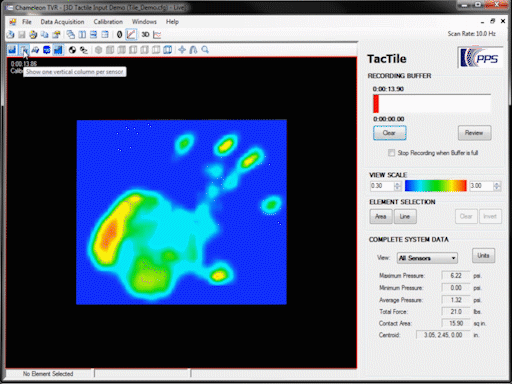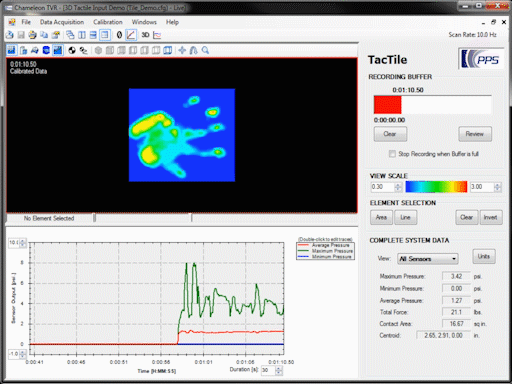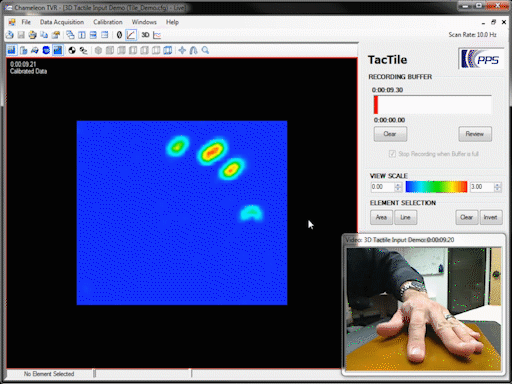Chameleon Software: Sensor Data Visualization
Supplied with every sensor system at no additional cost, Chameleon software is a full-featured, intuitive platform designed to help your team efficiently manage, analyze, and visualize tactile sensor data in real time. With its easy-to-use interface and flexibility, users can find smarter answers through a variety of customizable heat-map and graph displays. Whether working on a research project, industrial application, or product development, Chameleon software provides the resources needed to control, interpret, and export data seamlessly.
Visualize your data in a smarter way with an extensive variety of display options, including Line Trace, 2D Heat-Map, 3D Heat-Map, and Mesh plots. Captured data can be analyzed using interactive tools, screen-recorded for easy team collaboration, and exported for further analysis in Excel®, MATLAB®, and Mathcad®. With its fun and engaging visualization tools, users love the ability to turn complex sensor outputs into meaningful insights.
Features:
Interface with multiple PPS systems simultaneously
Easy recording, annotating and editing of pressure mapping data
View and control synchronized video alongside your pressure analysis.
Access real-time data, including average, max, and center-of-pressure tracking.View sensor data as a 3D colour map of the actual shape
Visualize sensor data as a 3D color map of the actual shape.
Export data in ASCII format for use in external software such as Excel®, MATLAB®, and Mathcad®.
Develop Windows apps using our simple API.
Latest Updates:
Improved video processing and resolution
Enhanced control over recording length and speed.
View real-time data with multiple pressure visualization tools
Customization options for data export settings.
Improved control over recording length and speed
Enhanced experiment annotations capabilities
Auto-save and recovery functions to prevent data loss.
Ability to print, export as images, and copy-to-clipboard for seamless integration with other applications
Tool tips and improved help functionality
Sensor Mapping
Easily map your data across multiple sensors
Your tactile sensor could have as little as four or as many as thousands of sensing elements. Each capacitive sensing element is converted to a digital output and transmitted live to Chameleon. These digital values are then converted to physical units of pressure such as PSI or kPa and are spatially organized to represent the actual sensor geometry. You can then select specific sensors to view, or view them as a whole and display them in 2D or 3D maps.
Visualization
Effectively visualize your data
Your tactile sensor output can be visualized in 2D pseudo-color mapping (pressure mapping) or in a 3D bar or mesh graph plot that provides information on contact pressures spatially. In sensors for a small number of sensing elements (approximately a dozen), you can visualize each of the elements in a time trace plot that provides a history of the pressures over time. In instances of a high number of sensing elements (hundreds or thousands), you can plot peak, average or minimum pressure values, or sometimes force and contact area, in addition to pressure mapping.
Analysis and Data Export
Quickly access important data points and export for further analysis
Chameleon’s analysis capabilities include peak pressure, centroid, contact area and force calculations, though its primary purpose is to collect tactile data from the sensor electronics and visually display them for the user. Ability to export all or a portion of the data collected as a text file is standard for more detailed analysis through programs such as Matlab and Excel. You can also export the data into a video recording, and screenshots can be easily copied and pasted into images or presentations.
Synchronized Video
View your experiment in action beside your sensor data
Video record your experiment so that the pressure mapping can be correlated to what generated it. To note specific events or time, a double click on the line trace opens the annotation box where you can record specific events and times within your data set.




